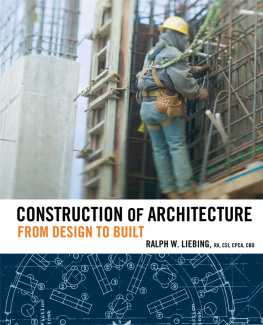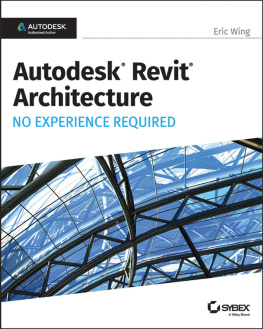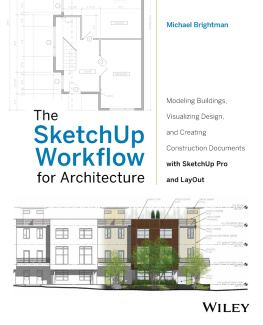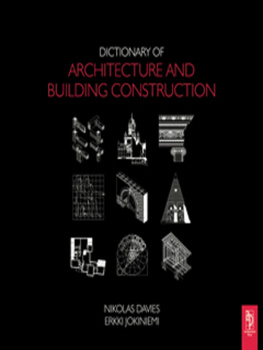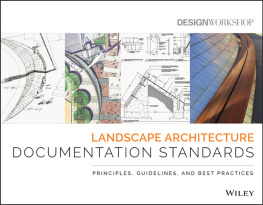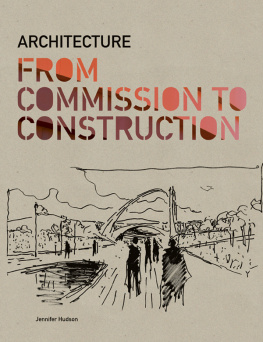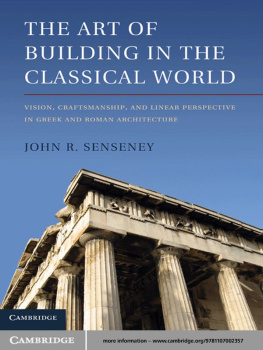This book is printed on acid-free paper. 
Copyright 2008 by John Wiley & Sons, Inc. All rights reserved
Published by John Wiley & Sons, Inc., Hoboken, New Jersey
Published simultaneously in Canada
Wiley Bicententenial LOGO: Richard J. Pacifico
No part of this publication may be reproduced, stored in a retrieval system, or transmitted in any form or by any means, electronic, mechanical, photocopying, recording, scanning, or otherwise, except as permitted under Section 107 or 108 of the 1976 United States Copyright Act, without either the prior written permission of the Publisher, or authorization through payment of the appropriate per-copy fee to the Copyright Clearance Center, 222 Rosewood Drive, Danvers, MA 01923, (978) 750-8400, fax (978) 646-8600, or on the web at www.copyright.com. Requests to the Publisher for permission should be addressed to the Permissions Department, John Wiley & Sons, Inc., 111 River Street, Hoboken, NJ 07030, (201) 748-6011, fax (201) 748-6008.
Limit of Liability/Disclaimer of Warranty: While the Publisher and the author have used their best efforts in preparing this book, they make no representations or warranties with respect to the accuracy or completeness of the contents of this book and specifically disclaim any implied warranties of merchantability or fitness for a particular purpose. No warranty may be created or extended by sales representatives or written sales materials. The advice and strategies contained herein may not be suitable for your situation. You should consult with a professional where appropriate. Neither the Publisher nor the author shall be liable for any loss of profit or any other commercial damages, including but not limited to special, incidental, consequential, or other damages.
For general information about our other products and services, please contact our Customer Care Department within the United States at (800) 762-2974, outside the United States at (317) 572-3993 or fax (317) 572-4002.
Wiley also publishes its books in a variety of electronic formats. Some content that appears in print may not be available in electronic books. For more information about Wiley products, visit our web site at www.wiley.com.
Library ofCongress Cataloging-in-Publication Data:
Liebing, Ralph W., 1935
Construction of architecture : from design to built / Ralph W. Liebing.
p. cm.
Includes bibliographical references and index.
ISBN 978-0-471-78355-8 (cloth)
1. Building. 2. Construction contracts. 3. Architectural contracts. I. Title.
TH146.L54 2007
690dc22
2007028892
Limit of Liability/Disclaimer of Warranty: While the publisher and the author have used their best efforts in preparing this book, they make no representations or warranties with respect to the accuracy or completeness of the contents of this book and specifically disclaim any implied warranties of merchantability or fitness for a particular purpose. No warranty may be created or extended by sales representatives or written sales materials. The advice and strategies contained herein may not be suitable for your situation. The inclusion of legal (case law) citations, contract information, and other legal information in this book is not intended as, and should not be used or construed as, legal advice. Neither the Publisher nor the author shall be liable for any loss or profit or any other commercial damages, including but not limited to special, incidental, consequential, or other damages.
The drawings, tables, descriptions, techniques, and photographs in this book have been obtained from many sources, including government organizations, trade associations, suppliers of building materials, and professional architects or architecture firms. They are presented in good faith, but the author and Publisher do not warrant, and assume no liability for, the accuracy or completeness of the content or its fitness for any particular purpose. It is the responsibility of the users to apply their professional knowledge in the use of information contained in this book, to consult the original sources for additional information when appropriate, and to seek expert advice when appropriate. The fact that an organization or Web site is referred to in this work as a citation and/or potential source of further information does not mean that the author or the Publisher endorses the information that the organization or Web site may provide or recommendations it may make.
The reader is expressly warned to consider and adopt all safety precautions that might be indicated by the activities described herein and to avoid all potential hazards. By following the instructions contained herein, the reader willingly assumes all risks in connection with such information.
To my wife, Arlene, my daughter, Alissa, and my son-in-law, Bobfor their continual love, understanding, tolerance, and encouragement.
To my students past and present, for their interest in hearing and reading what I have to share.
To new readers, offering what I hope is a unique opportunity for understanding projects from a new perspective.
To my dear buddy and friend, Emerson, a French Bulldog who always manages to calm me down and keep me humbleand loves me even at my worst.
Preface
Most people, including many architectural, engineering and construction management students, tend to think of architecture as something that somehow "merely appears." They do not yet have a feel for or understanding of the long process involved in the design and construction of an architectural project, nor the progression of events and work necessary.
Whether in an old neighborhood being refurbished, or in a fresh new, undeveloped site, the "piece of architecture" appears! This is understandable for the layperson but is more of a shortcoming for students. While perhaps steeped in theory and design principles in their academic process, students also need to understand the process of taking or converting a very fine design concept from a paper exercise to a finished, full-size, occupiable and usable building.
The process of delivering the finished project is simply called "construction." Those attuned wholly to the aesthetics and theory of architecture may well disdain this process, and look down upon it with less than understanding and respect. But if the truth be known, no architecture would exist without construction!
The basic issue is that no matter what one's position in the professions or in the project work, there is a fundamental and unavoidable requirement to understand the whole of the process of delivering a project. One can be totally dedicated to one phase of the project, but understanding of all phases is imperative to successful execution of work in that one phase. But understanding and appreciating the totality of a project is virtually impossible to do, looking from just the one end, the inception.
Construction and architectural projects are not a series of isolated events, each executed by separate groups of individuals, doing as they see fit. There is a need for coordination, cooperation, collectivism, and a drive to produce the project in the best fashion possible. Design professionals play a significant role in all this, as they produce the directions, instructions, graphics, and expertise addressing what is to be built, why, and how.
This is not to divert attention from the contractors, constructors, managers, trade workers, et cetera, who function in construction, but rather to point out that design is as much a tutorial on how the project is to be built, as it is a depiction of what is to be built. The overall design scheme (concept) is a function of, and a product of the designer be they architect or engineer. Here the effort is to provide the composite of elements that best will contain, convert, provide for, and establish the many tangles and requirements of the owner's program: that specific document wherein the owner expresses exactly what is desired of the finished project. All owners want fully functional projectslots of space, current problems resolved, costs within a reasonable budget, et cetera. And few, if any, want an ugly, errant, out-of-place piece of architecture.

